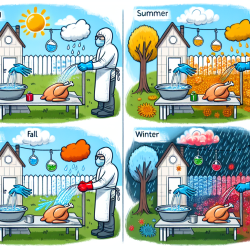Introduction
In the realm of speech-language pathology, data-driven decisions are crucial for creating effective therapy plans. While it might seem unconventional, insights from agricultural research can provide valuable lessons for improving outcomes in our field. The study titled "Temporal and spatial distribution of soil water and nitrate content affected by surface irrigation and fertilizer rate in silage corn fields" offers intriguing parallels that can enhance our approach to therapy.
Understanding the Research
The study conducted in Hebei, China, examined how different irrigation methods and fertilizer rates affected the distribution of soil water and nitrate content in silage corn fields. The research found that the uniformity of water and nitrate distribution varied based on the type of irrigation and fertilizer rate used. This variability in distribution can be likened to the diverse needs of children in speech therapy, where uniformity in approach does not always yield the best results.
Key Findings and Their Implications
- The study revealed that border irrigation resulted in slightly better water distribution uniformity compared to furrow irrigation. This suggests that the method of delivery can significantly impact the effectiveness of resource distribution, akin to how different therapy techniques can affect a child's progress.
- Fertilizer rate did not significantly affect the uniformity of nitrate distribution, highlighting that sometimes, the quantity of resources (or therapy sessions) is less important than the quality and method of delivery.
- The research also indicated that the spatial and temporal distribution of resources (water and nitrate) was more variable in the top soil layers, which can be compared to the need for tailored approaches in the early stages of therapy.
Applying These Insights to Speech Therapy
For practitioners at TinyEYE and beyond, these findings underscore the importance of customizing therapy plans to meet the unique needs of each child. Just as irrigation methods need to be adjusted for optimal crop growth, therapy techniques should be adapted to suit the individual learning styles and challenges of children.
Moreover, the study highlights the significance of monitoring and adjusting strategies over time, much like how continuous assessment and modification of therapy plans can lead to better outcomes for children.
Encouraging Further Research
Practitioners are encouraged to delve deeper into this research and explore how its principles can be applied to enhance therapy practices. By understanding the nuances of resource distribution in agriculture, we can draw parallels that inform our approach to delivering speech therapy services.
To read the original research paper, please follow this link: Temporal and spatial distribution of soil water and nitrate content affected by surface irrigation and fertilizer rate in silage corn fields.










